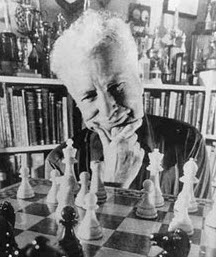The Elo rating system was created by physics professor and master-level chess player Arpad Elo. The rating system was created for judging a chess player’s skill relative to his peers. The Elo rating system was created for the USCF (United States Chess Federation) in order to show more fairly the players’ rating and skill level, compared to one another.
In 1970, the World Chess Federation officially started using the Elo rating system, but it has also been adopted by other sports and other board game leagues.
How the Elo Rating System Works
The Elo rating system not only shows the relative skill of one player to the next, but it can be used to predict the outcome of a match. The difference in Elo rating between players serves as a statistical indicator of the match outcome.
 If both players have an equal rating, then the odds of one player winning over the other is even. When a greater difference exists, then the percentage chance of one player winning over the other increases.
If both players have an equal rating, then the odds of one player winning over the other is even. When a greater difference exists, then the percentage chance of one player winning over the other increases.
The Elo rating system is self-managing in the sense that the Elo rating changes after each game, with the winning player taking points off the losing player.
The true beauty of the system is appreciated when we realise that the amount of points lost or gained, is itself determined by the difference in Elo rating between the two players. If a large difference exists and the higher rated player wins, then the higher rated player wins just a few points and the losing player loses just a few points. If on the other hand the lower rated player wins and there is a big difference in rating, then the losing player gains many more points. If a draw occurs in this scenario, then the lower rated player still wins a few points.
In this way, the Elo rating system quickly adjusts player’s ratings if they have been rated too low or too high.
Chess and the Elo Rating System
The Elo rating system gained popularity in chess because it is simple to calculate, and the calculations can be made by anyone. All that is needed is a calculator, the formula and a table of data issued by the chess organisation.
One variable that differs in different chess organisation’s Elo rating systems is known as the k-factor. The k-factor is added into the formula and it is used to vary how much a match’s outcome will affect the player’s Elo rating. If a high k-factor is used, then the match’s outcome will greatly affect the player’s Elo rating. If the k-factor is small, then the match’s outcome will only slightly affect the player’s Elo rating.
When it comes to match tournaments and ratings, chess organisations often apply a points bonus to active players. This was introduced to stop players from trying to protect their rating, when it was at an unexpected high, by not playing any chess matches.


